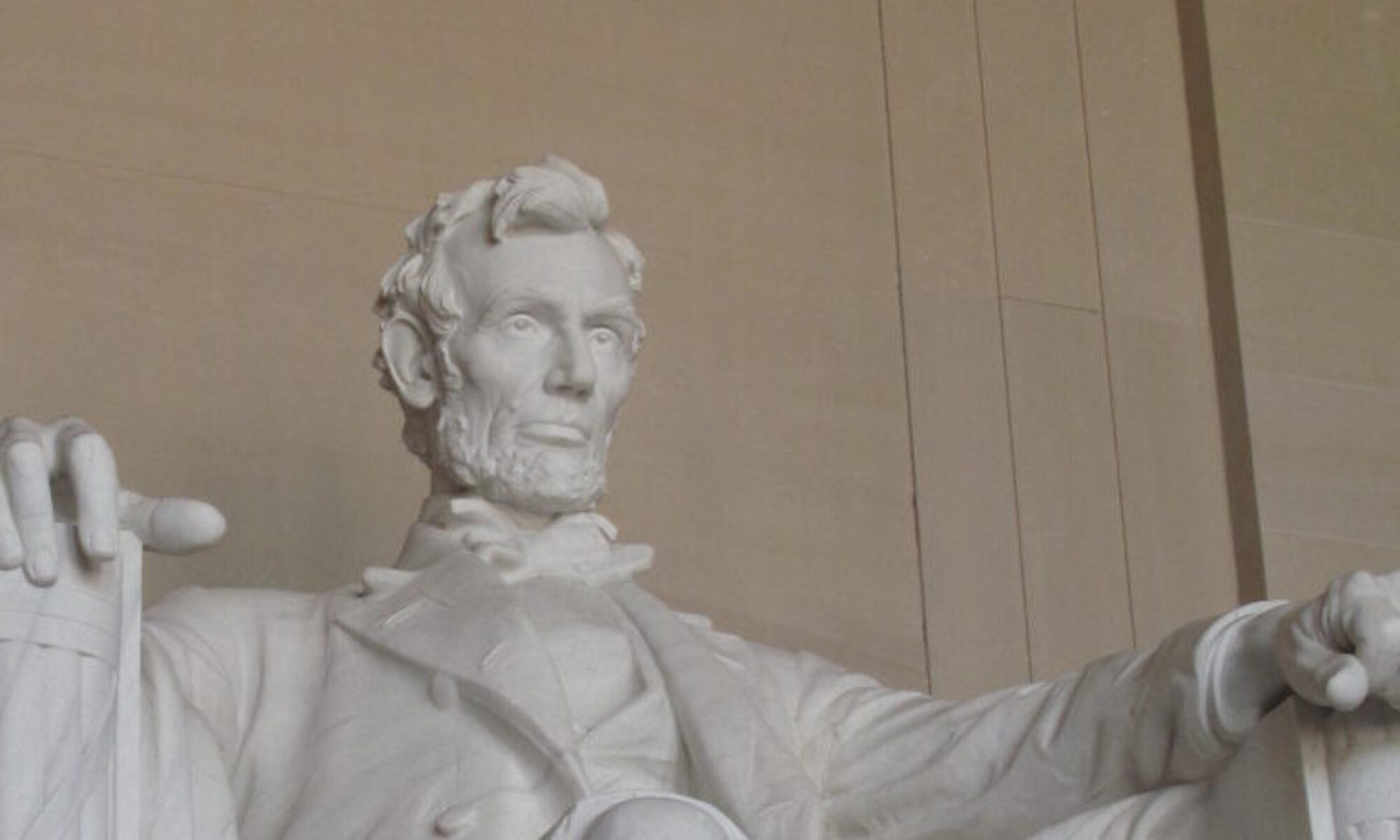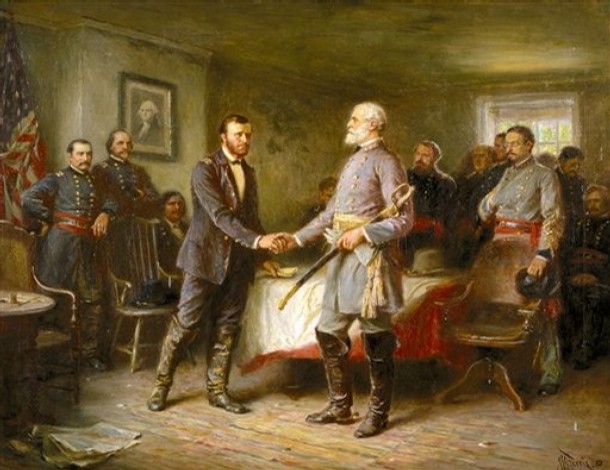On April 9th, 1965, a crowd developed in the front parlor of Wilmer McLean’s house in Appomattox Court House, Virginia. In no small irony, the final vestiges of the great storm transcontinentally roaring across the American land expanse over four strife filled years found itself guests in the house of the gentleman whose previous residence had received artillery damage in the first battle of the war at Manassas, Virginia. McLean, a sugar merchant, after narrowly escaping with his family from the destructive artillery of the first battle of Bull Run at Manassas, determined to pick a peaceful spot in Virginia he felt far from any strategic value and therefore safe for his family in a backwater known as Appomattox Junction in 1863. Despite his best efforts, the war that started in his front lawn was destined to end in his front parlor, for the collection of uniformed gentlemen sitting down in his house on April 9th, were the commanding officers of the Confederate and Union forces of the epic tragedy known as the Civil War.
There was certainly nothing civil about the Civil War. A harsh and uncompromising four year series of massive battles and countless skirmishes, the war took the lives of over 600,000 Americans and the limbs of countless others. No home was spared the tragedy of a family member or a relative falling to the vicious battles or oppressive health conditions that killed so many more. Despite the appearance of inevitable triumph that seemed to harken out of the Union Army’s simultaneous victories at Gettysburg and Vicksburg on July 4th, 1863, the nation had in reality only begun to suffer, with spectacular losses of men and materiel over the battles of the next two years, as Union commanders sought to split and finally sinter the Confederate army. The overwhelming economic power of the union north and its seemingly endless supplies of men and material, however, slowly but progressively overwhelmed the southern confederates apparent advantage in strategic command and fighting spirit related to defending their “homeland”. After the final collapse of Confederate defense at the many month siege of Petersburg, Virginia in late March , the remnants of General Robert Lee’s proud fighting army struggled to escape a vise devised by General Ulysses Grant and sprung by General Phillip Sheridan’s cavalry, and retreat westward towards interior lines of southern defense and hoped for re-grouping. This time however, the Union forces were not going to relent, and Lee found himself in the impossible position of defending both front and rear lines with no possibility of re-enforcement. The old tiger was caged, and he knew it.
At Appomattox, Virginia, on April 9th, 1865, in Wilmer McLean’s front parlor, the two great warriors sized each other up, as one prepared to deliver, and the other accept, the harshest wound suffered by any warrior, the acceptance of surrender. General Grant, with little training in the art of politics, proved to be a natural master, creating a surrender document that preserved the loser’s dignity, but not his capability, and Lee was impressed. Lee signed the articles of surrender, and at 400 pm the guns at Appomattox fell still, and a nation’s crisis of identity had come to a conclusion.
General Grant, so persistent in attack and resilient despite incredible pressure resulting form the massive loss of lives his army had incurred in the twenty some months of his command, proved the perfect opponent to Lee’s flashy and flexible style. He had simply crushed the life-force out of the southern confederacy through his plan to divide and subdivide, helped with the spectacular victories of his southern panzer attack across the deep south by General Sherman, and dominant calvary led by General Sheridan, and finally the bulldozer like capacity of the Grand Army of the Republic. He had great respect for what Lee had accomplished but not what he had fought for. Grant put it eloquently in his memoirs:
” I felt anything rather than rejoicing at the downfall of a foe who had fought so long and so valiantly, and had suffered so much for a cause, though that cause was, I believe, one of the worst for which a people ever fought.”
Lee left Wilmer McLean’s house and got on his steed Traveller, and rode to his troops to tell them of the surrender, where he was surrounded by thousands of his troops fighting tears upon word of the end, tears for their loss and particularly tears for the burden absorbed by their beloved commander. Grant, in his unique fashion, went back to his command tent to contemplate alone what had happened, and wrestle with another of his never ending migraines. The nation would celebrate, and suffer, in its own way, with the spontaneous celebrations of enormous and overpowering relief, and the cataclysmic grief of the loss of so many her sons and just a few days later a martyred president.
The many lessons of principled stands run amok filter down to us to this very day. We have become harsher in our discourse, and more radical in our beliefs, to the point where every contest or debate, however miniscule, becomes painted with political overtones. It paralyzes us to achieve any studied and consistent resolutions to pressing problems, and like 15o years ago, could become a flood that exceeds its banks, leading to real turmoil. General Grant understood the need for getting past the concept of winners and losers and on to cooperative success. When hearing the celebrating cannon of the union army announcing the surrender, he ordered them immediately stopped. He announced to his troops, ” The celebration is unfitting. The war is over. The rebels are our countrymen again.” We would do well to heed the words of our great general, who recognized that what separates us has no place in comparison to all that bind us together. Perhaps Wilmer McLean could lend his house to one more meeting of what it takes to find common ground as Americans.


Original painting at The Galena Museum. Commerative stamp issue of this painting at the post office this Monte.